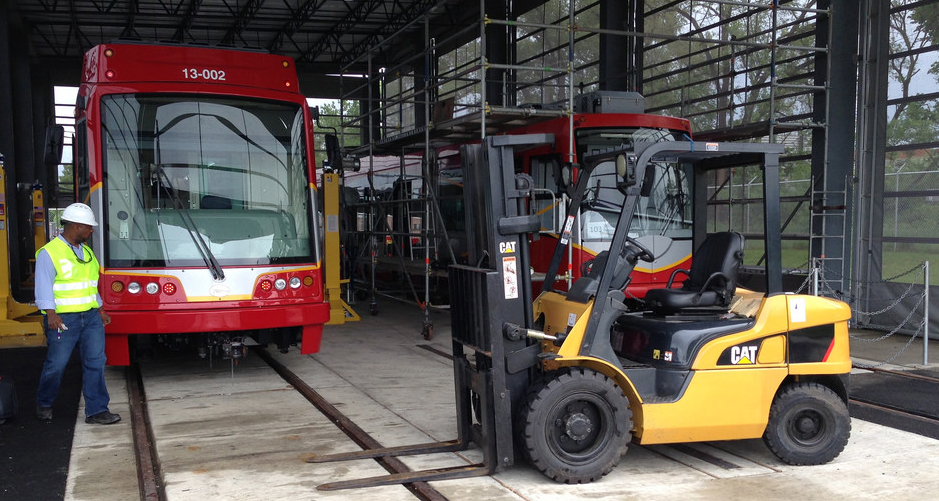
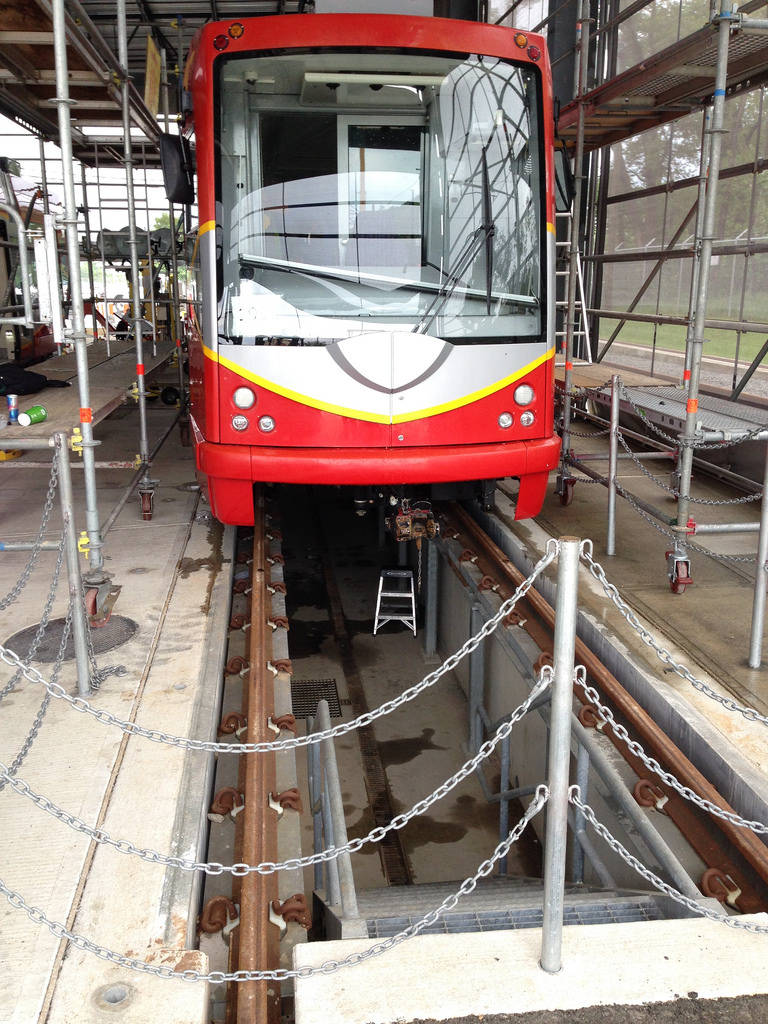
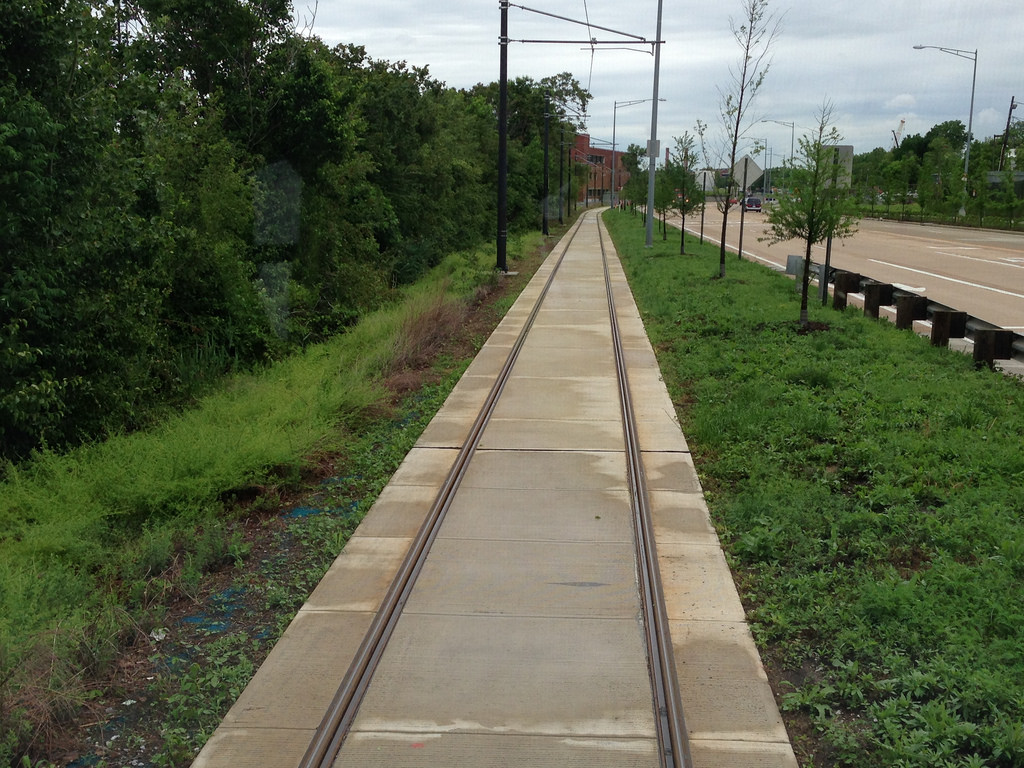
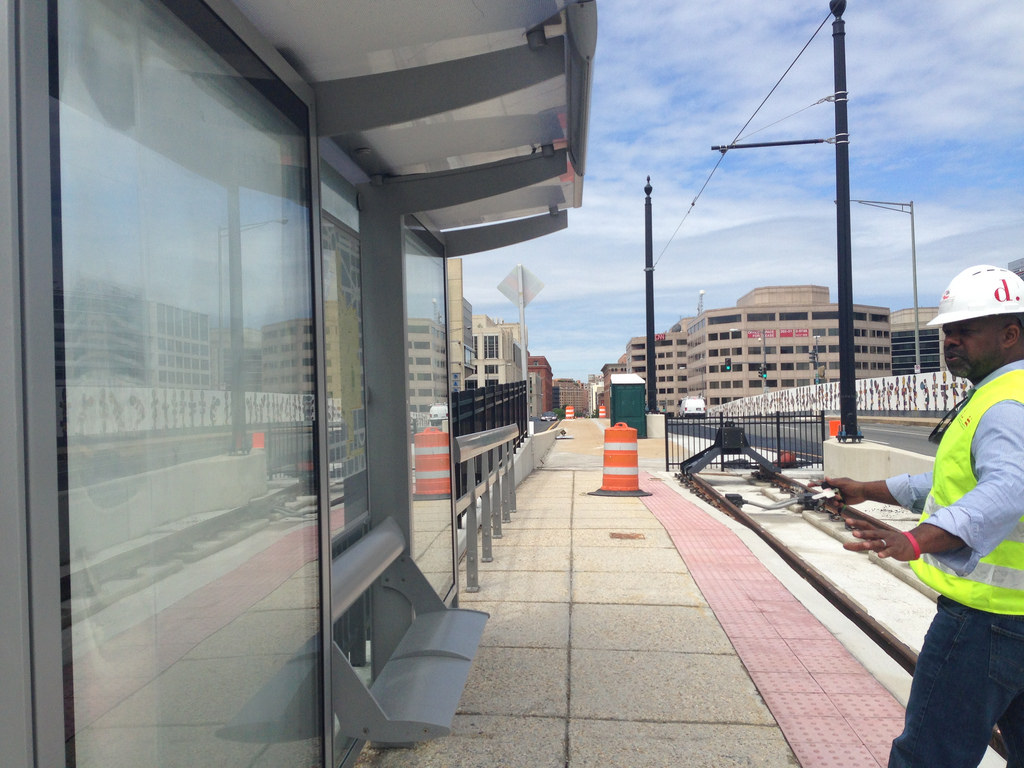
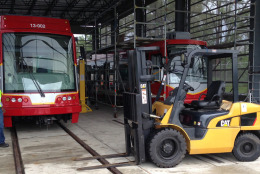
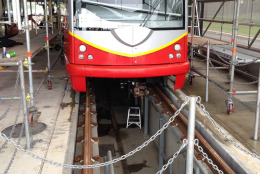
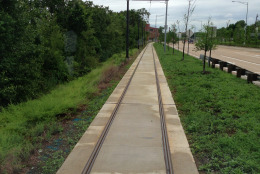
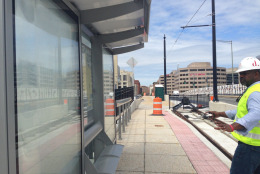
WASHINGTON — Streetcar service in Northeast D.C. won’t launch until the fall, but WTOP got a behind-the-scenes look into the streetcar and car barn that’s needed before passengers can take their first rides.
The streetcar from Oregon Ironworks is 60 feet long, 8 feet wide and 11 feet high. It’s a red vehicle with a thin yellow stripe and six entrances, three on each side.
“It has more capacity than Circulator buses,” says Thomas Perry, project engineer for the D.C. Department of Transportation. “There’s a lot of standing room, overhead hand rails and enough seats in the different levels to move people seamlessly.”
The streetcar will travel along the H Street-Benning Road NE corridor. Without any new setbacks, H Street-Benning Road streetcar service could begin sometime this fall.
The three-section streetcar has about 30 to 50 seats, but has a capacity of 150 people with overhead handrails and handicap accommodations. Steps take riders from the middle doors to seats behind the driver.
But the driver is physically separated from the passengers with a locked cabin, which is no bigger than the front half of an automobile.
There are cabins on both sides, so when the streetcar reaches the end of the line, the driver walks from one end to the other.
“In San Francisco, you see when they turn around those old cable cars, that’s a lot of real estate where you turn that huge wheel,” Perry says. “Whereas here, you just pull the vehicle up, and the driver can get out from one end, move to the other in an efficient manner.”
It’s still unknown how riders will pay for a streetcar ride. As of now, there are no SmarTrip machines on board like on Metrobuses. There are no fareboxes, and DDOT is still discussing how riders will pay and whether it will wait until Metro introduces new fare gate technology to replace SmarTrip.
“A final decision hasn’t been made on this,” says Carl L. Jackson, DDOT associate director of mass transit. “We’re discussing various options on how people can pay, including machines at the stations, or machines on board. In the long term, we’re working with WMATA to integrate their next generation technology into our system for a seamless experience.”
“The final fare for riders will depend on the budget process,” Jackson continues. “The mayor presented a budget; now, it’s up to the D.C. Council to adopt a budget that’ll address the issue. We have made recommendations on D.C. Circulator fares and streetcar is part of that conversation, too.”
While he wouldn’t give a specific price, Jackson seemed to indicate streetcar fares would be in the same ballpark as the base $1 Circulator and $1.60 Metrobus fare.
Streetcars will travel in mixed traffic with automobiles traveling in the same lanes. At the Hopscotch Bridge and 15th Street NE, special lights will give streetcars priority to get through the intersection and switch between the curb and median lanes.
Otherwise, streetcars will be subject to the traffic light cycles that everyone else deals with.
Car barn
At the old Spingarn High School, along Benning Road, construction crews from Dean-Facchina wade through a trench full of muddy water from the rain last week to build new drainage and tracks that’ll lead to a car barn.
Some track is already laid on the southwestern side of the site near Benning Road and 21st Street NE.
Eventually, streetcars will be able to enter the site and park the vehicle for overnight storage. The car barn will be located at the southeastern side near Benning Road and 26th Street NE, where a big mound of dirt sits today.
“It’s going to be a 15,000 square-foot facility that will allow us to maintain and operate the cars,” Perry says. “There will be a car wash to keep the streetcars clean. Also, you’re going to have a pit that’ll allow the operators to get under and inspect the cars as they come off from service.”
On the western side of the Spingarn site, a large box transformer feeds power to the overhead wires that’ll power the streetcars. It’s one of three along the route. Another is at the Hopscotch Bridge; the last, at 12th and H Street NE.
“You need two to run the system,” Perry continues. “The third one is for backup power. We would have to make some operational adjustments, if two of them went down.”
The car barn must be built before passengers can ride streetcars. Jackson says construction should begin this summer, and then a window of up to 90 days to get a final certification from the Federal Transit Administration can begin.
DDOT says the rough winter knocked construction back.
Watch video of WTOP’s access below.
Follow @WTOP on Twitter and WTOP on Facebook.







